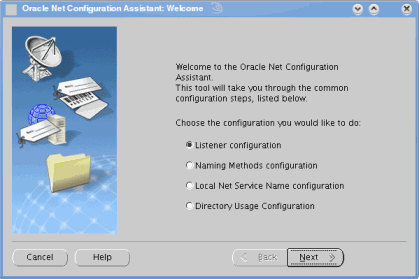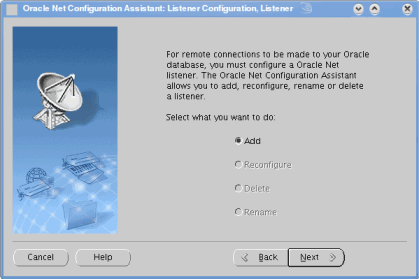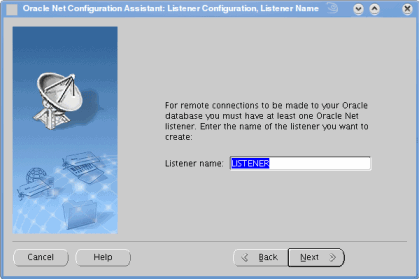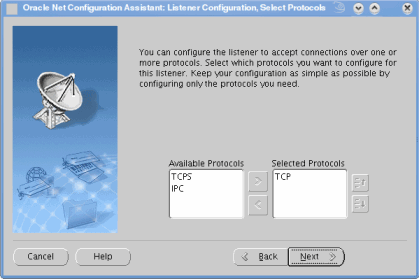oracle что такое listener
Урок 4: Настройка прослушивателя. Остановка и запуск экземпляра БД
На этом занятии вы узнаете, что такое прослушиватель, для чего он нужен. Как настроить прослушиватель для созданной ранее нами базы данных. Как управлять прослушивателем. Как запустить и остановить экземпляр базы данных.
Прослушиватель
Прослушиватель управляется файлом listener.ora. Может быть сконфигурирован только один файл listener.ora, на сервере может быть настроено несколько прослушивателей, и этот единственный файл может обслуживать их все. Как правило, если на одном сервере настроено несколько прослушивателей, то это сделано либо с целью обеспечения отказоустойчивости, либо для балансировки обращений к базе данных. Несколько прослушивателей, так же настраиваются при использовании Real Application Cluster.
Каждый прослушиватель представляет собой именованный процесс, запускаемый на каждом сервере баз данных. По умолчанию, прослушиватель имеет имя LISTENER и создается при установке Oracle. Если же вы настраиваете несколько прослушивателей, то каждый должен иметь уникальное имя. Ниже представлен пример файла listener.ora:
# listener.ora Network Configuration File:
/u01/app/oracle/product/11.1.0/db_1/network/admin/listener.ora
# Generated by Oracle configuration tools.
LISTENER =
(DESCRIPTION_LIST =
(DESCRIPTION =
(ADDRESS_LIST =
(ADDRESS = (PROTOCOL = TCP)(HOST = test.all-oracle.ru)
(PORT = 1521))
)
(ADDRESS_LIST =
(ADDRESS = (PROTOCOL = IPC)(KEY = EXTPROC))
)
)
)
Теперь вы имеете общее представление о прослушивателе. И можем настроить прсолушиватель для нашей базы данных.
Откроется окно графического приложения:
Предлагаются варианты, чего собственно будем настраивать. Нас интересует прослушиватель, поэтому выбираем «Listener configuration» и переходим далее.
На этом шаге указываем имя прослушивателя, по умолчанию предлагается имя LISTENER, как и говорилось в начале урока. На данный момент не планируется настраивать дополнительные прослушиватели и базы данных на тестовой машине, поэтому соглашаюсь с предложенным именем и перехожу к следующему шагу.
Здесь предстоит указать протоколы, которые будут использованы. Как правило, используется обычный TCP, его и выбираем. Жмем далее.
Указываем порт, который будет использоваться прослушивателем. По умолчанию, это 1521. Оставляем как есть и переходим далее.
Сейчас система интересуется, будет ли настраиваться еще один прослушиватель, отвечаем нет, переходим далее, и завершаем настройку. Если все хорошо, то на следующем экране система сообщит об успешном завершении настройки.
Теперь, когда прослушиватель настроен, можно познакомится с основными командами управления. Для управления прослушивателем используется утилита lsnrctl, расположена там же, где и утилита для настройки прослушивателя. Для ее запуска выполним:
Результатом исполнения, будет приглашение работать с консолью прослушивателя:
Для удобства, вы можете указывать команду сразу же после вызова утилиты, например, запустим созданный только что прослушиватель:
Аналогичным образом можно выполнить остановку или просмотреть статус.
Это все хорошо, скажете вы, но как быть если прослушивателя два, или три, как объяснить Oracle с каким прослушивателем хочет работать пользователь?
В случае, если у вас более одного прослушивателя, вы должны указать имя прослушивателя в команде. Например, выполним запуск прослушивателя, обратившись по имени:
Когда прослушиватель один, то указывать имя не обязательно, но если их более одного, то указание имени является обязательным.
И вот теперь, когда у нас настроен прослушиватель, можно наконец то достучаться до нашей базы данных, и убедится, что она есть, работает и вполне реальна.
Для этого, убедимся что наш прослушиватель запущен, выставим переменные окружения:
oracle@test:export ORACLE_HOME=/u01/app/oracle/product/11.1.0/db_1
oracle@test:export ORACLE_SID=test
Если база данных потушена, то об этом будет сообщено: Connected to an idle instance. Т.е. мы подключились к простаивающему экземпляру. Если же база данных поднята, то сообщится версия базы данных и редакция. Сейчас база данных погашена, для работы с ней, требуется ее запустить. Для этого выполним:
Сейчас база данных готова к работе. Для того что бы прверить работоспособность можно снова зайти в sqlplus и выполнить любой sql запрос. Например:
Вам будет выведена информация о базе данных.
Остался вопрос, как остановить базу данных. Остановка базы данных осуществляется так же через sqlplus. Для этого заходим в него, как было описано выше, при описании запуска базы данных Oracle. Ниже показана процедура остановки экземпляра базы данных и прослушивателя:
Сейчас база данных и прослушиватель остановлены. На этом завершим урок. В дальнейших уроках, будет более подробно остановимся на запуске и остановке экземпляра базы данных. Расскажу о параметрах остановки и запуска экземпляра и как они могут повлиять на работоспособность базы данных или помочь в случае сбоев.
Listener Oracle
Стас Белков
Автор статьи. Известный специалист в мире IT. Консультант по продуктам и решениям Oracle. Практикующий программист и администратор баз данных. Подробнее.
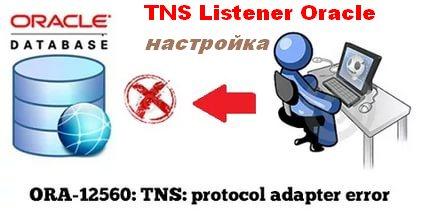
Файл listener.ora, который по умолчанию размещается в каталоге $ORACLE_HOME/network/admin в системах UNIX и в каталоге $ORACLE_HOME\network\admin в системах Windows, содержит информацию о конфигурации Listener Oracle. Поскольку служба слушателя действует только на сервере, клиентские компьютеры не содержат никакого файла listener.ora. Типичный файл listener.ora приведен в листинге ниже.
Все параметры конфигурации в этом файле имеют значения по умолчанию. Поэтому службу листенера не обязательно конфигурировать вручную. После создания первой базы данных на сервере служба TNS Listener Oracle автоматически запускается, и файл конфигурации слушателя, listener.ora, помещается в каталог, определенный по умолчанию. При создании новой базы данных ее информация о сетевых подключений и службах автоматически добавляется в файл конфигурации tns listener Oracle. При запуске экземпляра база данных автоматически регистрируется в слушателе, и слушатель начинает прослушивать запросы на подключение к этой базе данных.
Процесс PMON Oracle отвечает за динамическую регистрацию имен служб баз данных Oracle в листенере (Listener) — при создании новые базы данных Oracle будут автоматически регистрироваться в службе TNS Listener Oracle. Процесс PMON будет обновлять файл listener.ora после создания каждой базы данных на сервере.
Для обеспечения возможности автоматической регистрации файл init.ora или SPFILE должен содержать следующие параметры:
Если значение параметра SERVICE_NAMES не указано, по умолчанию ему присваивается значение глобального имени базы данных, являющееся сочетанием параметров DB_NAME и DB_DOMAIN. Значение параметра INSTANCE_NAME, устанавливаемое по умолчанию — идентификатор SID, введенный во время установки Oracle или создания базы данных.
Состояние листенера на сервере можно проверить с помощью утилиты lsnrctl, как показано в листинге ниже. Вывод показывает длительность работы Listener Oracle и размещение файла конфигурации службы слушателя. Он содержит также имена баз данных, которые слушатель “прослушивает” на предмет запросов на подключение.
Состояние в разделе Services Summary (Сводка по службам) листинга выше может принимать одно из следующих значений:
Команды TNS Listener Oracle
После вызова утилиты lsnrctl помимо status можно выполнять и другие важные команды. Например, команда services позволяет выяснить, какие службы слушатель отслеживает на предмет запросов на подключение.
На заметку! Состояние службы листенера можно проверить из страницы Net Services Administration (Администрирование сетевых служб) в Oracle Enterprise Manager.
Ознакомиться с доступными командами утилиты lsnrctl можно с помощью команды help, введенной в интерфейсе lsnrctl, как показано в листинге ниже.
После вызова утилиты lsnrctl запуск Listener можно осуществить с помощью команды start, а его остановку — с помощью команды stop. Если эти команды требуется выдать из командной строки операционной системы, можно использовать команды lsnrctl start и lsnrctl stop.
При внесении изменений в файл listener.ora единственный способ ввода этих изменений в действие — перезапуск слушателя. Другой, более безопасный способ — просто перезагрузка информации Listener, в результате чего последние выполненные изменения слушателя будут внесены в файл конфигурации. Команда lsnrctl reload позволяет перезагрузить TNS Listener Oracle “на лету”, без его перезапуска. Подключенные в текущий момент клиенты останутся подключенными во время перезагрузки Listener (или даже при его перезапуске), поскольку слушатель уже “отдал” подключения базе данных и не участвует в обмене данными между клиентом и службой базы данных.
Внимание! Изменять файл listener.ora не рекомендуется, если только для этого не существует веской причины. Кроме того, при использовании динамической автоматической регистрации служб необходимость в модификации файла возникает значительно реже. Тем не менее, в некоторых случаях приходится изменять определенную часть файла Listener, содержащую информацию о конфигурации сети для всех служб, которые слушатель отслеживает на предмет запросов подключения.
Управление Listener
Хотя установка службы Listener Oracle достаточно проста, после ее выполнения можно предпринять ряд действий для более точной настройки процесса подключения и для обеспечения безопасности службы TNS Listener Oracle. Некоторые из этих параметров описаны в последующих разделах.
Несколько TNS Listener
На одном сервере могут действовать более одной службы Listener NET Oracle, но обычно такую конфигурацию придется применять в Oracle RAC. При использовании нескольких служб слушателя можно конфигурировать параметр CONNECT_TIME_FAILOVER, который определяет длительность ожидания клиентом подключения через одного Listener, прежде чем будет предпринята попытка подключения с помощью другого Listener Oracle.
Установка размера очереди
Иногда большое количество одновременных запросов на подключение со стороны клиентов могут перегрузить службу слушателя. Чтобы уберечь Listener от сбоя, можно использовать параметр QUEUESIZE в файле конфигурации listener.ora для указания допустимого количества параллельно выполняющихся запросов на подключение.
Для большинства операционных систем значение параметра QUEUESIZE — достаточно небольшое число, наподобие 5. Ниже приведен пример установки параметра QUEUESIZE:
Установка пароля для Oracle Listener
При первоначальной установке Listener утилита не имеет никакой защиты паролем. Любой пользователь, имеющий доступ к операционной системе, без труда может остановить Listener Oracle и воспрепятствовать клиентам подключаться, просто введя команду lsnrctl stop в командной строке.
На заметку! Установленный по умолчанию пароль службы слушателя — listener, и при использовании Listener этот пароль указывать не нужно.
Собственный пароль для утилиты Listener Oracle можно установить, как показано в листинге ниже.
После того как пароль успешно изменен, службу Listener нельзя будет останавливать или запускать как раньше — для этого придется ввести пароль пользователя. Для указания листенеру Оракл нового пароля необходимо использовать выражение set password в приглашении утилиты lsnrctl, после чего можно еще раз запустить или остановить службу Oracle Net Listener. Обратите внимание, что выражение set password не устанавливает новый пароль, а просто вынуждает слушателя запрашивать пароль для выполнения административных задач.
Результат неудачной попытки остановки Listener вследствие отсутствия предоставленного пароля показан в листинге ниже. Затем листенер был корректно остановлен посредством применения команды set password.
12
Configuring and Administering the Listener
The listener is a separate process that runs on the database server computer. It receives incoming client connection requests and manages the traffic of these requests to the database server. This chapter describes how to configure the listener to accept client connections.
This chapter contains these topics:
Listener Configuration Overview
A version 9 listener is required for an Oracle9 i database. Previous versions of the listener are not supported for use with an Oracle9 i database. However, it is possible to use a version 9 listener with previous versions of the Oracle database.
Supported services, that is, the services to which the listener forwards client requests, can be configured in the listener.ora file or this information can be dynamically registered with the listener. This dynamic registration feature is called service registration and is used by Oracle9 i or Oracle8 i instances. The registration is performed by the PMON process—an instance background process—of each database instance that has the necessary configuration in the database initialization parameter file. Dynamic service registration does not require any configuration in the listener.ora file.
Service registration offers the following benefits:
Service registration reduces the need for the SID_LIST_ l istener_name parameter setting, which specifies information about the databases served by the listener, in the listener.ora file.
The SID_LIST_ l istener_name parameter is still required if you are using Oracle Enterprise Manager to manage the database.
Because the listener always knows the state of the instances, service registration facilitates automatic failover of the client connect request to a different instance if one instance is down.
In a static configuration model, a listener would start a dedicated server upon receiving a client request. The server would later find out that the instance is not up, causing an » Oracle not available » error message.
Service registration enables the listener to forward client connect requests to the least loaded instance and dispatcher or dedicated server. Service registration balances the load across the service handlers and nodes.
Oracle Enterprise Manager tools require static service configuration in the listener.ora file.
Listener Configuration During Installation
Oracle Universal Installer launches Oracle Net Configuration Assistant during software installation. Oracle Net Configuration Assistant enables you to configure the listening protocol address and service information for an Oracle database.
During an Enterprise Edition or Standard Edition installation on the database server, Oracle Net Configuration Assistant automatically configures a listener with a name of LISTENER that has a TCP/IP listening protocol address for the Oracle database. During a Custom installation, Oracle Net Configuration Assistant prompts you to configure a listener name and a protocol address of your choice.
Additionally, a listening IPC protocol address for external procedure calls is automatically configured, regardless of the installation type.
Oracle Net Configuration Assistant also automatically configures service information for the Oracle database and the external procedures in the listener.ora file.
While service information is not required in the listener.ora file, Oracle Net Configuration Assistant assumes that you are using Oracle Enterprise Manager to monitor the database. Oracle Enterprise Manager requires this information to discover the database.
Figure 12-1 Example listener.ora File
Oracle9i Net Services Reference Guide for further information about identifying listeners by unique names and creating multiple listener entries in the listener.ora file
Customizing Listener Configuration
If the default or installed configuration is not adequate for a particular environment, you can use Oracle Net Manager to customize the listener.ora configuration.
This section contains these configuration topics:
Configuring Listening Protocol Addresses
To configure additional protocol addresses for the listener:
If a listener has never been created:
The Choose Listener Name dialog box appears.
A new Address tab appears.
When configuring the listener to listen on TCP/IP, you should enter the default port of 1521. If you do not, you must configure the LOCAL_LISTENER parameter in the initialization parameter file and resolve the listener name through a naming method.
If the computer has more than one IP address and you want the listener to listen on all available IP addresses, configure TCP/IP or TCP/IP with SSL and enter the host name of the computer in the Host field.
Configuring Access to Oracle JServer
Clients access Enterprise JavaBeans (EJBs) and Common Object Request Broker Architecture (CORBA) applications, provided with the Oracle JServer option, in an Oracle8 i database over an Inter-Orb Protocol (IIOP) connection. IIOP is an implementation of General Inter-Orb Protocol (GIOP) over TCP/IP. To support access to CORBA and EJB, you configure the listener with a protocol address with port 2481 for TCP/IP or port 2482 for TCP/IP with SSL.
To configure a protocol address for Oracle JServer in an Oracle8 i database:
A new Address tab appears.
The listener.ora file updates with the following:
Oracle8i Enterprise JavaBeans Developer’s Guide and Reference for complete instructions for configuring client connections to EJB and CORBA applications
Handling Large Volumes of Concurrent Connection Requests
If you expect the listener to handle large volumes of concurrent connection requests, then you can specify a listener queue size for its TCP/IP listening endpoints. To specify the listener queue size, specify the QUEUESIZE parameter at the end of the protocol address with its value set to the expected number of concurrent requests. For example:
Figure 12-2 listener.ora File with Queue Size
The default number of concurrent connection requests is system specific. Following are the defaults for the Solaris Operating System and Windows NT:
Configuring Static Service Information
In order for the listener to accept client connect requests to an Oracle8 release 8.0 or Oracle7 database, you must configure the listener.ora file with information about the database. Static configuration is also required for other services, such as external procedures, Heterogeneous Services, and some management tools, including Oracle Enterprise Manager.
For Oracle9 i and Oracle8 i databases, the listener uses the dynamic service information about the database and instance it has received through service registration before using statically configured information in the listener.ora file.
Table 12-1 describes static service settings that you can set in the listener.ora file.
